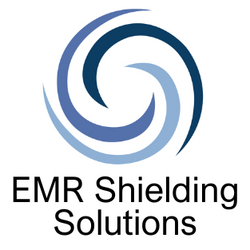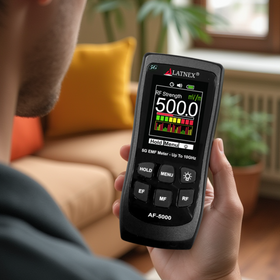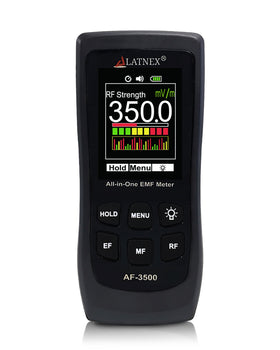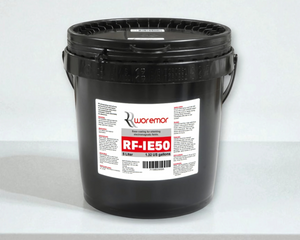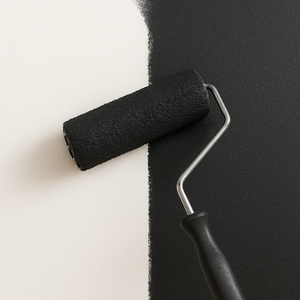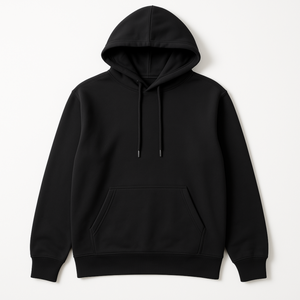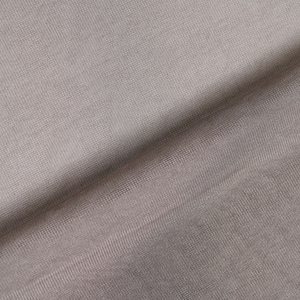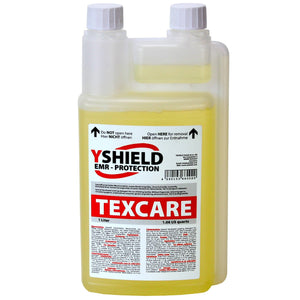Question:
I painted an exterior wall section facing a neighbour’s smart-meter, however I did not notice a change in my EMF meter’s readings, and there are still high spikes. What could be causing this?
Answer:
The paint you used blocks the RF signal emanating from smart meters, therefore there must be another source of EMR that your meter is picking up. For example:
1) When measuring with your meter, make sure that your cell phone is not nearby
2) Turn off internal RF sources in your home such as WiFi, cordless phones, Bluetooth devices, etc
3) Your measurement equipment should be reliable, and always be sure that the battery is fully charged
Question:
Can I use RF Shielding Paint to protect against Low-Frequency EMF?
Answer:
Our RF Paint can be used to shield against Low-Frequency (LF) electrical fields, however, in order to achieve the best results, the paint must first be grounded.
Question:
Do you have paint to prevent RFID (radio-frequency identification) interference in shops and retail stores?
Answer:
RFID paint can be used by large retailers in their stores in order to block interference with their RFID and scanners for product tags and IDs. The RFID paint is easily applied and is very effective for this purpose.
Question:
Do I need to ground the EMF Paint in order to get better EMF protection?
Answer:
The grounding effect on better EMF protection is only when shielding low frequency electrical fields. However, because of safety measures the paint must be grounded. It's simple to ground EMF paint with GS3 grounding Plate and GSX grounding strap. The full list of grounding accessories could be found in the EMF grounding Accessories section.
Question:
What grounding supplies do I need?
Answer:
The grounding supplies that you need is the GSX grounding strap, the GL-cable, and the GS3 grounding plate. Please note for external you need the GF4 grounding plate and the AF3 fiber additive for EMF paint.
Question:
Is it possible to use the EMF Paint for a spray application?
Answer:
Airless spraying is possible with nozzles bigger than 525 (0.25 inch / 0.64 mm), smaller nozzles get chocked sometimes.
Question:
What is the coverage of the EMF 5L paint and the 1L EMF paint?
Answer:
The 5L bucket covers 400 square feet and the 1L bucket covers 81 square feet.
Question:
How do I apply the EMF paint?
Answer:
The EMF paint is applied as any regular paint and can be used with typical tools and accessories. Please see How to Apply YShield EMF Paint for more in-depth information.
Question:
What type of paint can I use on top of the EMF paint?
Answer:
The paint that you should use on top of the EMF paint can be plastic bonded, water-based emulsion paints, facade paints or silicon resin paints.
Question:
Will the EMF paint still work behind stucco?
Answer:
If you are applying the EMF paint inside there will be no problems with using the stucco finish. If you are applying the paint outside then it is recommended to paint over the EMF paint with water based paint before applying the stucco finish.
Question:
Can EMF paint be applied to concrete.
Answer:
To apply EMF paint to concrete you need to first apply the primer concentrate GK5. The GK5 is a special coordinated high quality primer concentrate for surface preparation with the shielding paint.
You will then need to use at least 1-2 layers of primer on top before the sealant is applied. If the floor is going to have a lot of traffic from heavy equipment, a thick, durable and resistant top coat should be used to protect the shielding paint.
In terms of grounding, the AF3 Fiber additive is the best choice and 1 bottle needs to be added to each bucket of paint required for the second coat. The grounding plates should be placed along the perimeter every 15 meters.
Question:
Can the shielding paint be removed?
Answer:
Shielding paint is hard to remove, you would have to scrape it off with a paint scratcher / putty knife / spatula or sand the surface thoroughly.
If you live in a rented apartment and have to remove the paint later, we recommend to paint on wallpaper. It is easier to remove wallpaper with the shielding paint on it.
Question:
Can I use fans to speed up the dry time of the paint?
Answer:
It is not recommended to use a fan, as the shielding quality will suffer if the paint dries too quickly.
Question:
Is it okay to mix DRY54 Shielding Paint powder with a concrete sealer such as DryLok?
Answer:
No, the dry paint can only be mixed with the specified amount of water.
Question:
If the grounding tape is still visible after painting over it, can drywall plaster be used to smooth out the edges?
Answer:
Yes, a wall joint compound can be used, however you must ensure it is an acrylic or plastic based compound due to the better adhesion. You must also note that it is recommended to consult with the manufacturer of the joint compound to confirm compatibility with the type of top coat paint used.
Question:
If 2 layers of shielding paint have a layer of regular paint in between them, is the shielding effectiveness increased?
Answer:
No. To achieve the maximum result, you would need to adjust the distance to the wavelength you want to shield, which could be some centimeters or even more. Unfortunately, this distance is not provided with a thin layer of paint in between. If the inside surface of the walls were painted, it could help to add another layer of shielding paint on the outside of the wall - or vice versa. But it would need extensive testing and measurements on site to find out the wavelength of the pollution and the corresponding distance that works to really decrease the readings significantly.
